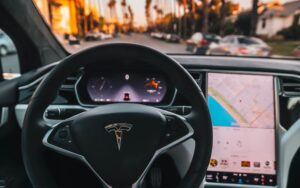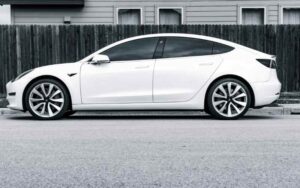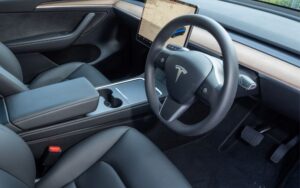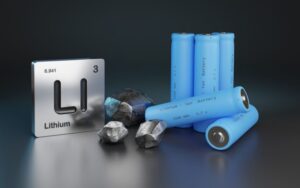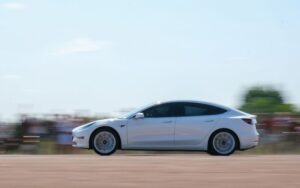Does Tesla Make Their Own Batteries? (Explained)
Last updated on September 21st, 2023 at 09:38 am
Tesla has been a force in the electric vehicle business for some time. Their innovation placed them at the market’s lead, and expectations have arisen concerning their batteries.
Batteries are a vital component of electric vehicles. Good batteries can enhance your enjoyment of your Tesla. In this regard, Tesla stepped up their battery production.
In this article, you’ll understand how Tesla ventured into battery manufacturing.
Tesla began manufacturing solar batteries in 2015, which helped them earn a reputation in the battery production business. In January 2016, Tesla partnered with Panasonic to build a gigafactory. There are now about six of these giga factories, and they produce the rechargeable batteries used on Tesla vehicles. These factories also manufacture batteries for other electric vehicles.
This article will discuss Tesla’s efforts to manufacture its batteries. You’ll learn when and where Tesla carries out their battery production.
Also, you’ll understand the procedures manufacturers use to create a Tesla battery.
Does Tesla Manufacture Its Own Batteries?
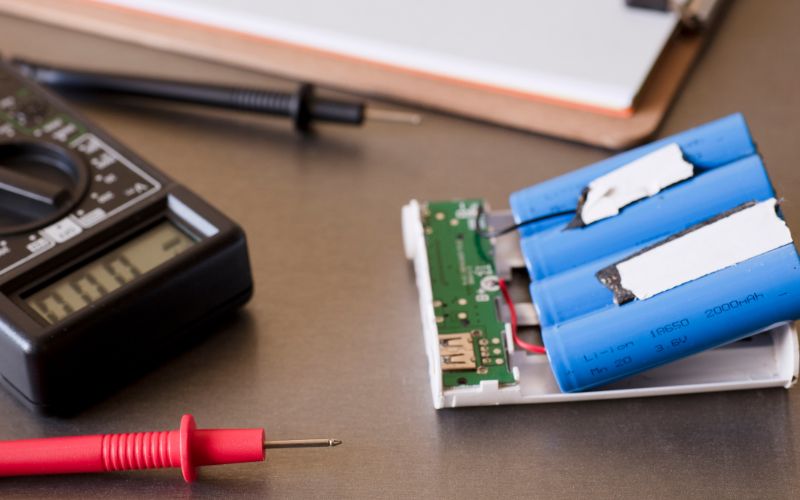
Tesla manufactures batteries for their vehicles. Battery production started when people complained that Tesla vehicles were too costly and only for the rich class.
There were also complaints about the range of these vehicles. These complaints prompted Elon Musk (co-founder of Tesla) to coordinate with battery producers.
This coordination aimed to reduce costs and enhance efficiency. However, there was no significant progress on the battery issues.
Tesla prepared to begin the battery production business properly. In 2015, Musk declared that Tesla would start producing solar batteries.
This announcement propped up additional bargaining muscle with suppliers. The two first products of Tesla regarding battery production were grid and home batteries.
These batteries added to the electric storage concept. The first home battery was the Powerwall. Tesla released the first of its kind in 2015.
They released an updated version in October 2016. This version had twice as much storage capability as the first type.
The grid battery was the Tesla Powerpack, which is being replaced with the Megapack. Tesla isn’t the only producer of grid and home batteries.
These batteries aim to lessen costs via stored energy. With other companies participating in the battery business, Tesla doesn’t make enough from battery production.
Tesla hopes to continue selling its cars to improve its battery business.
When Did Tesla Start Making Batteries?
The Gigafactory Nevada started partial manufacturing of the Powerwall home power storing unit in January 2016. Initially, Tesla got their battery cells somewhere else.
As time went on, they started mass manufacturing their cells in January 2017. The first word on the factory was in November 2013.
In July 2014, Panasonic agreed with Tesla to build a factory. State executives announced the Nevada site strategies on 4th September 2014.
Panasonic decided to spearhead battery cell manufacturing. Expansion plans started in April 2015. Tesla wanted to build more gigafactories after getting $800M worth of orders.
$179M worth of PowerWall and $625M worth of PowerPack amounted to the orders within one week of launching.
Musk stated that the first gigafactory couldn’t meet the battery demand. He intended to reveal three to four more gigafactory sites that would produce batteries and cars.
Tesla expanded their first gigafactory by acquiring 1,864 acres of land near the 1000-acre site. They intended to deliver regenerative battery handling.
The gigafactory would deal with raw materials and reprocess aged batteries into fresh ones. Value creation would mostly fall on cells.
Tesla considers production to be more central than products. They allocate many engineers to production engineering.
At the Gigafactory, Panasonic creates battery cells using the recent form factor ‘2170’. Panasonic and Tesla jointly engineered the battery cells, with updates coming afterward.
The cells were bigger than the 18650 cells utilized in the Tesla Models X and Y. Initially, the cells were supposed to have dimensions of 20 mm for diameter and a length of 70 mm.
21 mm by 70mm is the reviewed specs for the augmented form factor. Tesla calls this the ‘21-70’ or ‘2170’.
The company aimed to have Panasonic start cell manufacture in 2016 and continue for the next ten years.
Gigafactory kicked off mass manufacture of the 21-70 cells in early 2017. The US-produced Model 3 strictly used Panasonic cells with the 21-70 format.
By the end of 2018, Panasonic ran 11 cell manufacturing lines. A few of these lines underwent provisional alteration from storage to vehicle to improve Model 3 supply.
The expectation for Gigafactory’s capability in 2020 was 35 gigawatt-hours of cells yearly.
There were also estimates on battery module production, which was 50 gigawatt-hours yearly.
Upon completion of the factory, Tesla intended that there would be massive production of Li-ion batteries. This production will account for the most Li-ion batteries in the world.
Gigafactory accomplished 35 gigawatt-hours per annum in May 2019, although utilization levels reduced the output to 24 gigawatt-hour.
Where Are Tesla Batteries Made?
China, Japan, and the US produce Tesla batteries. CATL is a large Chinese corporation providing Tesla batteries in their Shanghai factory.
CATL focuses on the production of Li-ion batteries used in electric vehicles. Tesla also manufactures their batteries in Fremont, California.
It is a pilot industrial unit and serves as a testing site for Tesla’s intentions to ramp up its battery production.
Furthermore, the Gigafactories in the United States produce some percentage of the batteries used in Tesla vehicles.
The most vigorous part of producing Tesla batteries is the battery modules. Japan produces most of these modules as well as Tesla’s gigafactory.
There is a huge market for Tesla in China, so most of their production happens there.
The factories in Shanghai make Tesla vehicles for their citizens, and Tesla plans to grow the market.
Here is a breakdown of the Tesla batteries production site.
#1. Battery Assembly
Assembly is a vital aspect of the battery production business. A battery pack holds thousands of unit batteries, which end up in the Tesla vehicle.
This assembly happens in Gigafactories and Tesla factories in China. The biggest gigafactory in Nevada and smaller ones in the United States assemble Tesla batteries.
Tesla and Panasonic oversee operations in these gigafactories. Their combined efforts produced the cells used for the batteries.
#2. Origin of the Raw Materials
Tesla batteries require various raw materials to create their batteries.
The following are the raw materials needed for producing Tesla batteries.
- Aluminum
- Graphite
- Cobalt
- Manganese
- Nickel
- Lithium
These materials require hard labor to acquire them. The costs of obtaining these raw materials increase the battery cost by 50%.
Tesla gets their Lithium from Argentina, the United States, South Korea, Chile, and Australia. Lithium is scarce, so Tesla tries to get it where it can.
On the other hand, Aluminum is available, so Tesla sources it worldwide. Cobalt is the rarest of these raw materials; only a handful of countries have considerable amounts.
The largest site for Cobalt mining is in the Democratic Republic of Congo. The country accounts for more than half of Cobalt globally, so Tesla sources it there.
Graphite is the raw material for anodes in the battery cells. Tesla gets their graphite from China to produce their anodes.
Tesla gets its Manganese from South Africa and Nickel from Indonesia, New Caledonia, and the Philippines.
Does Tesla’s Use of Their Own Batteries Affect the Lifespan of the Battery?
Tesla’s use of their own batteries does impact the lifespan of the battery. Studies have shown that the tesla battery lifespan revealed is impressive, with an average degradation rate of less than 10% over eight years. This showcases the durability and longevity of Tesla’s batteries, leading to enhanced performance and customer satisfaction.
How Does Tesla Make Their Batteries?
Like all electric vehicle batteries, Tesla batteries require several machine parts to produce the packs. Battery cells are put in frames to form battery modules.
These modules further link through electrical wiring bound in a pack. The pack is now mounted straight into the Tesla vehicle.
Before continuing, one must understand the components of a battery pack. The battery cells are small, steel cartridges, and rectangular.
The cells hold a cathode, anode, and separator submerged inside an electrolyte. These cells undergo inspections before they can go into the modules.
Manufacturers call the procedure a ‘leak check.’ This process is the first in assembly, and it guarantees that the electrolyte remains contained and doesn’t leak out of the cell.
If the cell leaks, the leakage could occur throughout the battery’s life cycle. It is vital to check these cells, as one leak can compromise the entire battery.
The next procedure is to gather up these cells into modules. Each module has about a dozen battery cells, although the number might vary.
The modules pile inside a steel frame. The frame contains safety housing to guard the cells from hard knocks and shocks.
Assembly is very much automated, especially when putting the modules into packs. This procedure requires a lot of electrical setup and tweaking.
After putting the modules in place, a technician physically connects them. With all connections done, a robot drills in screws to finish the assembly.
The pack is now ready for installation inside the Tesla’s frame.
Tesla uses lithium-ion batteries, although they aren’t the same. The batteries use various major cathode chemistries that evolve.
The following are the cathode types in Tesla vehicles:
- Nickel, Cobalt, Aluminium (NCA)
- Nickel, Cobalt, Manganese (NCM)
- Lithium, Iron, Phosphate (LFP)
NCM and NCA have a strong energy density that helps give range to Tesla cars. LFP has lesser density and isn’t as expensive as the first two.
LFP has no Cobalt or Nickel, so it suits prototype models.
There are three tubular cell types that Tesla uses on their electric vehicles. However, a fourth type, prismatic, has recently found itself in many Tesla cars.
The table below shows the different battery cell types.
| Cell Type | Dimensions | Use |
|---|---|---|
| 1865 | Width of 18 mm and height of 65 mm | Roadster, Models X and S. |
| 2170 | Width of 21 mm and height of 70 mm | Models 3 and Y. |
| 4680 | Width of 46 mm and height of 80mm | Model Y from Texas and Germany. |
| Prismatic | Prototype Models Y and 3. |

Hey, I’m Michael Davis, a 35-year-old with a degree and a love for cars and tech. Since I was a kid, cars have been my thing—so much that I even thought they ran on magic beans! Fast forward, and I’ve built Vehicle Army, your one-stop-shop for easy-to-understand car facts.

